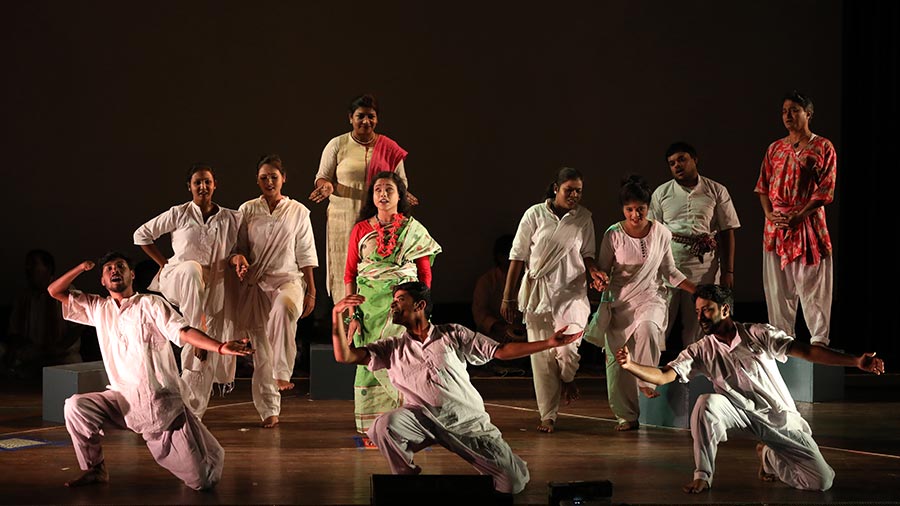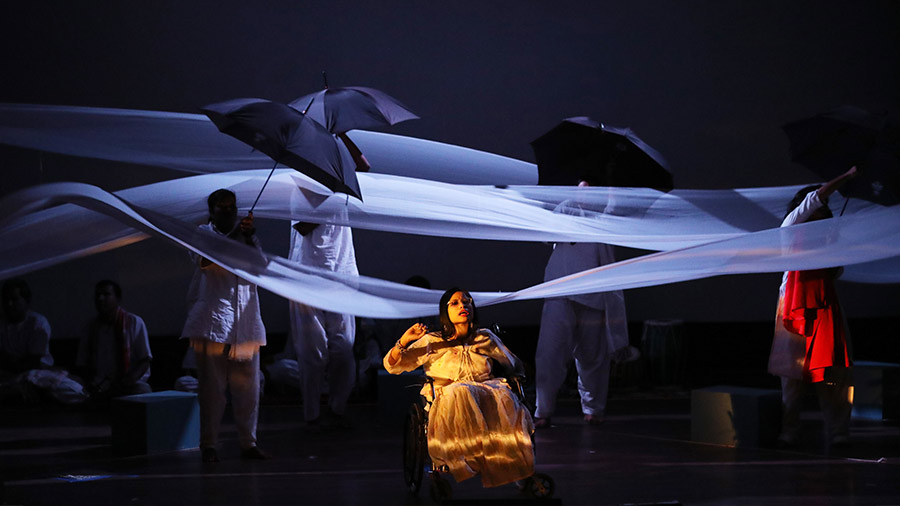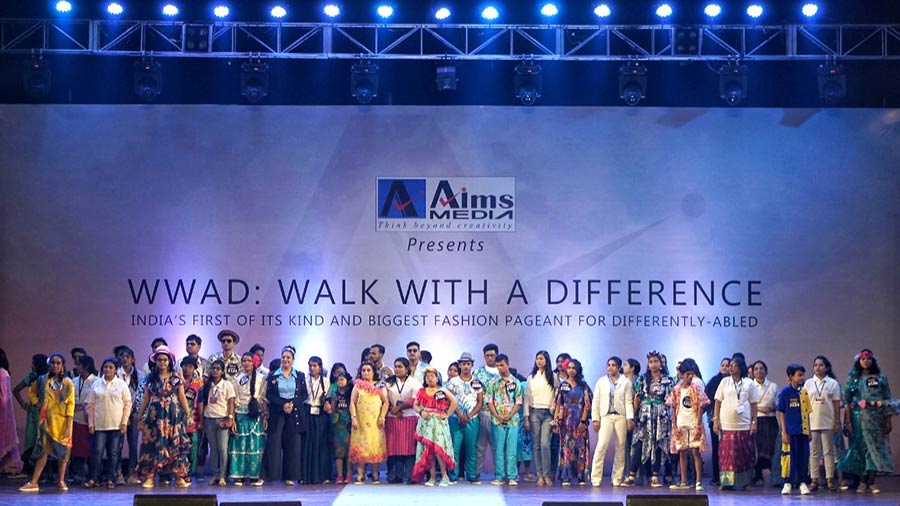A group of 23 artists aged 19 to 50, many of them hearing impaired, disabled and neurodivergent, from the rural areas of West Bengal staged an inclusive play with live sign language interpretation recently.
Wasteland: A Journey presented by Jana Sanskriti Centre for Theatre of the Oppressed along with British Council, Graeae, UK, and theatre-maker Tim Wheeler marked the centenary of Eliot’s The Waste Land. Inspired by Eliot’s classic, the play also drew from Mahabharat and Rabindranath Tagore’s Raktakarabi.
“Through Wasteland, I learnt how to make theatre accessible to disabled people. I introduced a sign language interpreter as a character and the rest is my artistic direction. From what I read of T.S Eliot’s poem I thought that retelling the story was not possible, it would be better to bring out the philosophical trend of the narrative, which is very much Indian. This is combined with a story from the Mahabharat, Rabindranath and Jasimuddin,” said Sanjoy Ganguly, artistic director of Jana Sanskriti Centre for Theatre of the Oppressed.

The aim of making theatre accessible to people with special needs motivated the entire event and the performances
Ganguly admitted it was a challenge to work with disabled artists. “I usually use images to bring out layers and dimensions in a character but that was not possible with visually impaired actors. Similarly, for the hearing impaired, I could not explain through words. The visually impaired have a strong sense of touch and feel so I used harnessing and other props on the stage so that they would know how to utilise the space on stage. For the hearing impaired, there was a sign language interpreter. Some used a wheelchair, so we had to assist them accordingly,” he said. Debanjan Chakrabarti, director British Council East and Northeast India, lauded the production. “It brings together some of the iconic texts from India and the UK. It brings together art forms from both India and the UK and it brings together people. People who are disabled and people who are not visible on the surface. I think this is a very powerful message that goes out through this particular production where there is inclusiveness and togetherness of cast,’’ he said.
Ganguly said the idea was to create intellectual power through theatre. “We believe that art is a basic need because art is a social metaphor. If one cultivates art, then they cultivate society and they can become social critics. More than problem-solving we are interested in taking the mass towards critical thinking, to try and manifest their intellectual faculties through theatre,” said Ganguly, who met Augusto Boal, Brazilian theatre practitioner, drama theorist, and founder of Theatre of the Oppressed, in 1991 in Paris.
“I told Boal that we were doing propaganda theatre but it was not being recognised by intellectual faculties. So, he taught me forum theatre which is recognised as the Theatre of the Oppressed. In India, we are the first exponent of such theatre,” he said.
Jana Sanskriti uses theatre to portray problems as it is and asks people what they think. “Now people are intervening and that’s why we coin spectators as 'spec-actors'. The interaction between spectators and 'spec-actors' in our theatre breaks the passivity of people. Once intellectual power grows they cannot be blind followers. This is making them ‘spect-activists’. This is a term I have coined. People are coming as spectators, becoming ‘spec-actors’ and through debate and discussion they take back intellectual powers in real life and become ‘spect-activists’. We are building a community by introducing theatre and making people social critics,’’ Ganguly said.
The Wasteland actors come from the Sunderbans, Kakdwip, Siliguri, and a few from around Kolkata. “We have a hearing impaired lady called Ratna. Her father is a kirtan artist. In our country, how much does one earn by practising traditional art? They don’t have an opportunity to know how much can be benefited through a hearing aid. We have an all-women team where women dress up as men and perform, she is a part of the team. She is also able to respond through sounds now. One of our Down Syndrome artists performed today with a folk team. So, even in villages, people are understanding that those who were subjects of mockery have potential and should be included,’’ Ganguly said.

The event has brought together artists from different parts of Bengal, with some hailing from the Sunderbans, Kakdwip, Siliguri, and a few from around Kolkata
‘My personal learning while working with such individuals is that they have potential and talent. We want to tell people that let us recognise this. If we can, there will be inclusion, empowerment, and we will be able to humanise society.’’ signed off Ganguly.

